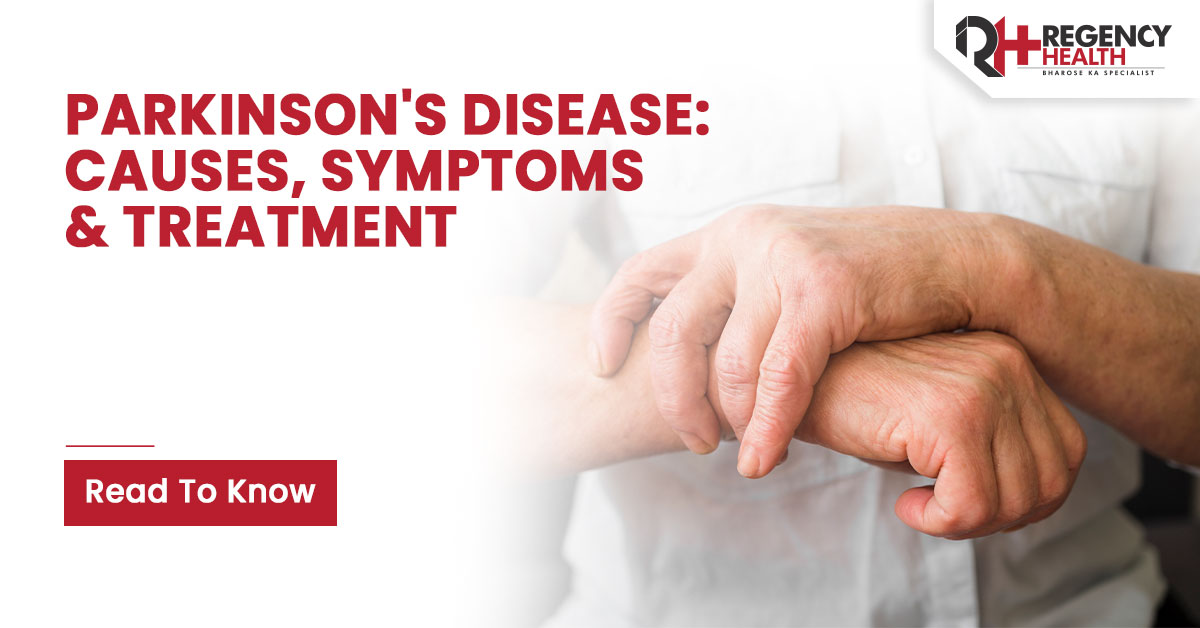
What is Parkinson’s disease?
Parkinson’s disease is a neurological disorder that develops in people with age. This condition causes parts of the brain to slow down and deteriorate with age causing a slowing down of a person’s motor skills, body balance, and coordination. A majority of Parkinson’s disease cases are caused by unknown factors, while some are hereditary. Although there is no known cure for the illness, there are numerous available treatments that can bring great respite to patients. The symptoms start out mildly and aggravate with time. Patients could experience difficulties speaking and walking as the illness worsens. Also, they may experience behavioral and mental changes along with sleep issues, depression, memory loss, and constant weariness.
Causes of Parkinson’s disease
One of the primary causes of Parkinson’s disease symptoms is the impairment or death of cells in the basal ganglia region of our brain. This region aids the movement of the body. Dopamine, which is essential for brain functioning, is produced by these cells. The slashed dopamine levels that directly cause neurons’ death also lead to several movement issues. The cause of neuron degeneration is still unclear.
Another major cause of spike in Parkinson’s disease symptoms is the imbalance in Norepinephrine, which is a neurotransmitter as well as a hormone. It regulates heart rate and blood pressure and is off charts for people suffering from Parkinson’s disease. Several of Parkinson’s disease non-movement symptoms, like exhaustion, abnormal blood pressure, slowed digestion, and a sharp drop in blood pressure is a direct result of this.
Parkinson’s disease stages
The disease can be broadly classified into the following stages:
First stage- Impacts non-motor aspects of body functions and causes depression, fatigue, and anxiety.
Second stage– Impacts motor aspects of body functions causing body imbalance, ability to eat, chew, speak, etc.
Motor Examination – In this stage, the movement-related impact of the disease is ascertained. Speaking abilities, facial expressions, and walking abilities become increasingly weak.
Motor complications- The level of seriousness of the symptoms and their lifespan will be studied in this stage. Their impact on a patient and future course of action is also determined here.
How is Parkinson’s disease diagnosed?
Parkinson’s disease is primarily diagnosed clinically, which means a doctor will most likely look at your symptoms, ask you questions, and look over your medical history. The next step is performing some necessary diagnostic tests to check various body parameters. It is also vital to determine if the patient is actually suffering from Parkinson’s and mere lab tests may not be sufficient to determine this. Medical experts conduct thorough steps to confirm the onset of Parkinson’s.
Treatment for Parkinson’s disease
While there is no cure for Parkinson’s disease, some symptoms can be effectively managed with medication, surgery, and other therapy. Depending on each individual’s unique symptoms and how well various treatments work, different methods of treatments are suggested. Medication is a primary treatment method for Parkinson’s disease.
Surgery to implant a device that will administer a gentle electrical current to a portion of your brain (deep brain stimulation) is a secondary treatment option. However, there are some experimental possibilities, such as stem cell-based therapies, but their accessibility varies a lot and many of them are not accessible to those who have Parkinson’s disease.

 Call-an-Ambulance
Call-an-Ambulance



